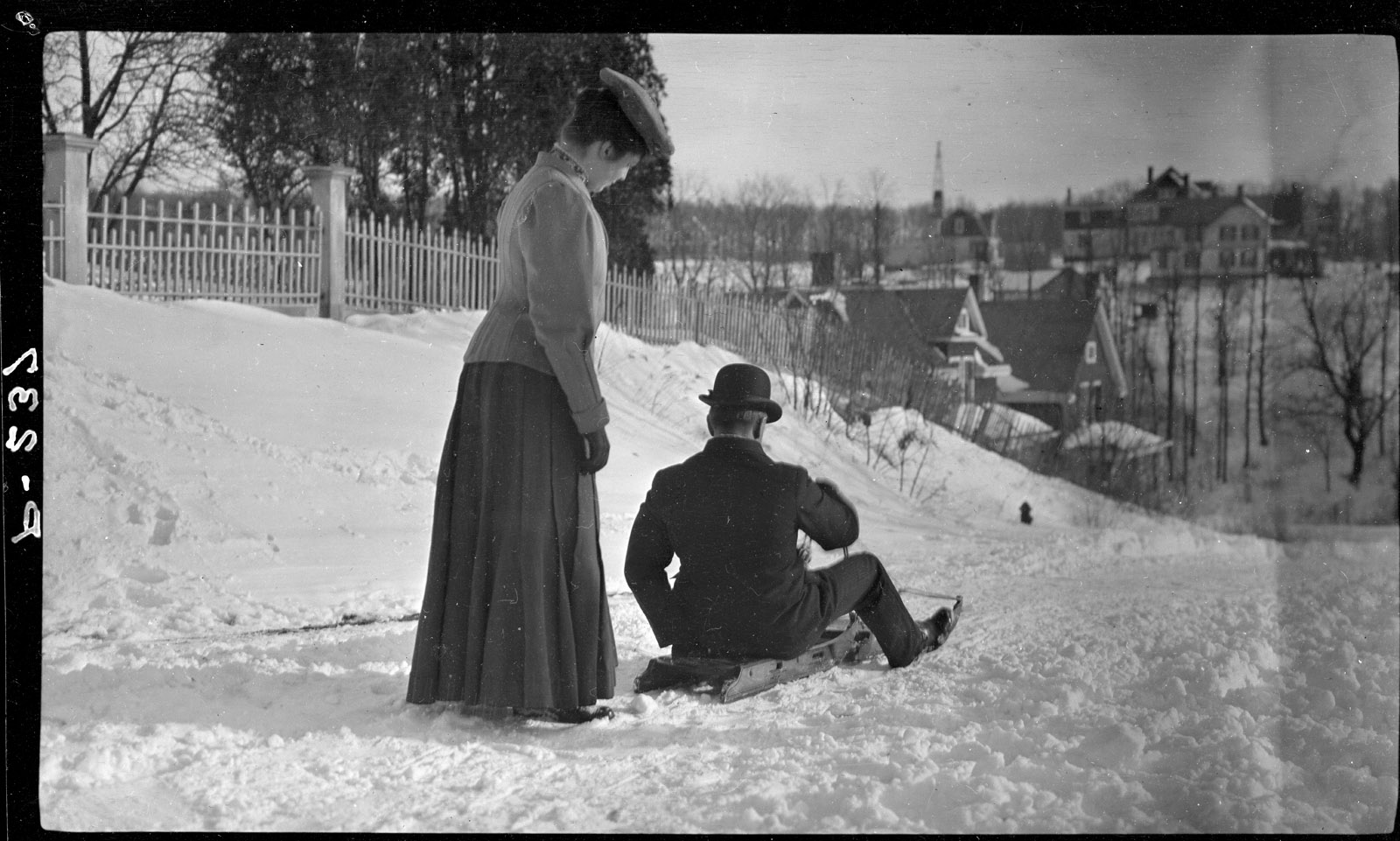Although the etching on the left of the image may look like hieroglyphics, it’s actually the photographer’s notation, “P-237”, from the original negative printed in reverse. The letter “P” stands for Port and his notes for 237 tell us we are looking at Miss Spencer and Mr. Landis on Carlton Avenue in February 1909.
The Cow Neck Peninsula Historical Society received a donation of thousands of original negatives and glass plates of photographs such as this that John S. Witmer Jr. took all over Port Washington in the early twentieth century. “P-237´ is one of the images from this treasure trove that Chris Bain is in the process of culling and cataloging. There’s more to come.
For now, we have this photo that Witmer took from the corner of Third and Carlton looking south into the valley where Stannard Creek runs toward the bay. Spencer was a school teacher who became Witmer’s wife in 1911. Landis may be the husband of Shirley Landis who founded the Rose Shop on Main Street that was regarded as a premier fashion store. (First names were not recorded.)
Landis, in a bowler hat, digs the heels of his shoes into the snow, ready for take-off. Spencer, in a long skirt, is leaning forward, about to give him a push. Together, their dark figures form a triangle in the foreground. The line of the sloping hill behind them converges with the road in the distance.
The two houses on Carlton are still there. The one closer to us (49 Carlton) was built by Charles Cocks in 1898. His father, Solomon Cocks, had major property holdings (the Cock’s Farm) on the north side of the Mill Pond.
Like his father, Cocks was a builder and purchased lots in his own neighborhood that were emerging from the breakup of the Mitchell Farm. In fact, he built the house next door in 1908 for his son.
They are similar structures: Victorian, front facing gables, symmetrical facades, steep pitched roofs, and front porches. It is likely that Cocks used plans from one of the many architectural guidebooks that were popular with builders who were working for an emerging middle class that could afford to build homes with some style.
The far background is too blurry to identify with any certainty; is that a church spire? At any rate, today the view is blocked by the apartment development on the other side of Stannard Creek. That fire hydrant poking out of the snow is still there.
What is it about an old photograph that makes it so fascinating? It could be a family photo that preserves our memories or a historical one that tells us about our collective past. If we are willing, it may stimulate our imagination; perhaps the Cocks families will come out on their front porches to see if Mr. Landis sleds smoothly by or crashes in a snow bank.
Ross Lumpkin is a trustee at the Cow Neck Peninsula Historical Society, www.cowneck.org.



